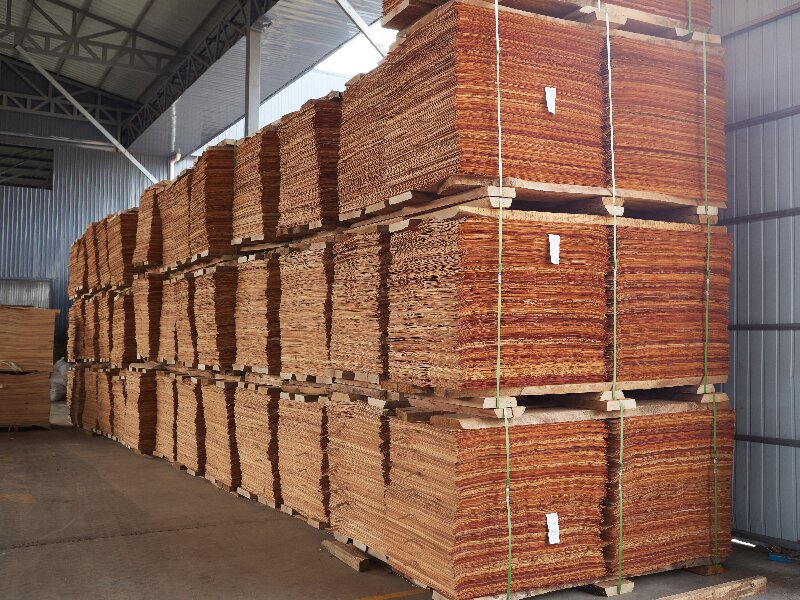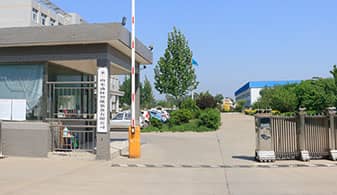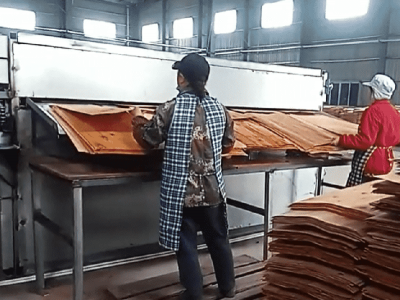The Veneer Revolution: How Technology and Sustainability are Reshaping the Future of the Wood Industry and Building Design
In an era defined by the urgent need for sustainable construction and a growing human desire for natural aesthetics, an ancient material is undergoing a radical transformation. Wood veneer, long appreciated for its beauty, is now at the epicenter of a convergence of advanced manufacturing, digitalization, and environmental stewardship. The global wood industry is witnessing a renaissance, driven by innovations in veneer production, revolutionary drying technologies, and a fundamental shift in how architects and builders specify materials for the built environment. This isn't just a story about covering surfaces; it's about reimagining the very grain of modern construction.
For decades, veneer has occupied a complex space in the market. Praised for its ability to bring the warmth and uniqueness of prized hardwoods to a wider audience, it has also been misunderstood, often unfairly compared to its solid wood counterpart or laminated alternatives. Today, that perception is being dismantled. The contemporary wood veneer is a high-tech, engineered product that offers unparalleled design flexibility, superior performance characteristics, and a sustainability credential that is difficult for any other material to match.
The Sustainability Imperative: Driving the Veneer Advantage
The most powerful tailwind for the wood veneer market is the global push towards sustainable building practices. With the construction sector accounting for a significant portion of global carbon emissions and resource consumption, the pressure to choose environmentally responsible materials has never been greater.
"Veneer is the ultimate expression of resource efficiency," explains Dr. Alana Reed, a materials scientist at the Timber Innovation Collective. "A single log can produce thousands of square feet of veneer, covering vast surface areas that would require orders of magnitude more wood if using solid lumber. This 'facing power' is its superpower. We are maximizing the beauty and utility of every tree harvested, many of which now come from certified, sustainably managed forests and rapidly renewable species like Paulownia and Acacia."
This efficiency aligns perfectly with the principles of the circular economy and certifications like LEED and BREEAM. The use of wood veneer contributes to credits in categories such as Resource Efficiency, Low-Emitting Materials, and Indoor Environmental Quality. Furthermore, the core component of veneered panels is often made from recycled wood content or agricultural by-products, creating a composite product with a dramatically lower embodied carbon footprint than solid wood, plastic laminates, or metals.
Architects are taking note. "Our clients, from corporate giants to residential developers, are demanding transparency and sustainability," says Ben Carter, a principal at a leading architecture firm in Chicago. "Specifying a beautiful oak or walnut wood veneer on a panel with an FSC-certified core isn't just an aesthetic choice; it's a statement of values. It tells a story of responsibility, of connection to nature, and of intelligent design. In the building sector, that narrative is becoming as important as the structural integrity itself."
The Digital Grain: Precision, Customization, and New Aesthetics
The integration of digital technology is revolutionizing veneer production from the sawmill to the showroom. Computer-controlled lathes and slicers can now optimize the cutting pattern for each log with microscopic precision, minimizing waste and maximizing yield. But the true game-changer lies in the realm of design and fabrication.
1. Digital Matching and Sequencing: Advanced scanning and software allow manufacturers to create "digital flitches" – virtual sheets of veneer that can be arranged and matched with perfect precision before a single sheet is pressed. This allows for breathtaking, seamless patterns across large walls, ceilings, and custom millwork. For high-profile projects like luxury hotels or corporate headquarters, architects can now approve the exact grain match and sequence digitally, eliminating costly on-site surprises.
2. The Rise of Reconstructed Veneers: Perhaps the most innovative trend is the development of reconstructed, or engineered, veneers. This process involves taking fast-growing, less prized species or even plantation woods, dyeing them, and reassembling them under immense pressure and heat to create sheets that replicate the look of rare, old-growth hardwoods or even entirely new, abstract patterns.
"This technology is a paradigm shift," says Maria Fernandez, CEO of a veneer innovation lab in Germany. "We are no longer limited by nature's timeline. We can create consistent, vibrant, and sustainable versions of endangered woods like Brazilian Rosewood or create bespoke colors and grain patterns that are unique to a specific project or brand. It democratizes luxury and unlocks a new frontier for interior design."
The Heart of Innovation: The Modern Veneer Dryer
None of these advancements would be possible without a critical, yet often overlooked, piece of equipment: the veneer dryer. The process of drying freshly sliced veneer is one of the most delicate and energy-intensive stages in production. Traditional dryers were notorious for high gas consumption and could easily damage delicate sheets, leading to splits, checks, and color inconsistencies.
Today, a new generation of high-efficiency veneer dryer systems is addressing these challenges head-on, becoming a key battleground for innovation in the wood industry.
1. Heat Pump and Microwave Hybrid Dryers: Leading manufacturers are now deploying heat pump technology in their veneer dryer lines, which can reduce energy consumption by up to 60% compared to conventional systems. These dryers recapture latent heat from the exhaust and reuse it, creating a closed-loop system that is both cheaper to operate and has a lower carbon footprint.
Furthermore, hybrid systems that combine conventional convection heating with microwave or radio-frequency energy are gaining traction. "Microwave drying targets the water molecules within the wood itself, rather than just heating the surface," explains an engineer from a major veneer dryer manufacturer. "This results in a much more uniform and rapid drying process, significantly reducing internal stresses that cause cracking. The result is a higher quality sheet, lower rejection rates, and increased throughput."
2. AI-Optimized Drying Schedules: Artificial intelligence is now being integrated into veneer dryer controls. Sensors continuously monitor moisture content, temperature, and air velocity at multiple points. The AI algorithm adjusts the drying parameters in real-time based on the species, thickness, and initial moisture of the veneer entering the line. This "smart drying" ensures every sheet is dried to a perfect, consistent moisture content without human error, paving the way for fully automated, lights-out production facilities.
Transforming the Built Environment: Veneer in Application
The impact of these trends is visibly transforming the building industry. The application of wood veneer has moved far beyond boardroom tables and luxury furniture.
1. Architectural Interiors and Biophilic Design: The principles of biophilic design—connecting occupants with nature to improve well-being—have become a cornerstone of modern architecture. Wood veneer is a primary vehicle for this movement. We see it cladding entire airport terminals, creating warm and acoustic-absorbing walls in offices, and forming the central feature of healthcare facilities, where studies have shown that natural wood elements can reduce patient stress and aid recovery.
2. The Curved and Dynamic Future: The flexibility of veneer is being exploited like never before. Advanced bending techniques allow designers to create flowing, curved forms that were previously impossible or prohibitively expensive with solid wood. From undulating ceiling canopies to sculptural staircases and rounded podiums, wood veneer is bringing soft, organic geometry back into a world of hard lines and right angles.
3. High-Performance Surfaces: The development of ultra-durable, multi-layer coating systems has made wood veneer suitable for high-traffic areas once dominated by plastics and metals. These new coatings provide exceptional resistance to scratches, stains, and even chemicals, allowing the use of real wood in laboratories, schools, restaurants, and retail spaces without sacrificing longevity or beauty.
4. Hybrid Materiality: A fascinating trend is the combination of wood veneer with other materials. Designers are inlaying veneer with metals, back-lighting it with LEDs to create a glowing effect, or laminating it onto translucent substrates for semi-transparent partitions. This hybrid approach creates unique textures and visual depth, further expanding the design vocabulary.
Challenges and the Road Ahead
Despite the optimistic outlook, the industry faces challenges. The global supply chain for rare logs remains volatile, reinforcing the need for the reconstructed veneer market to mature. Furthermore, there is a persistent need to educate consumers and specifiers on the difference between high-quality, durable veneer products and the negative perceptions associated with cheap, thin laminates.
The future, however, is bright. Research is already underway into bio-based, formaldehyde-free adhesives and even more resilient coating technologies derived from natural sources. The integration of the wood industry into the broader "Industry 4.0" framework—with interconnected, data-driven factories—promises even greater efficiency and customization.
In conclusion, the humble wood veneer has shed its traditional skin. It is no longer merely a decorative layer but a sophisticated, sustainable, and highly engineered material sitting at the intersection of nature and technology. Driven by smarter veneer dryer systems, a sustainability-minded wood industry, and an adventurous building sector, the veneer revolution is just beginning. It is crafting a future where our living and working spaces are not just built, but thoughtfully woven with the intelligent, beautiful, and enduring grain of wood.






